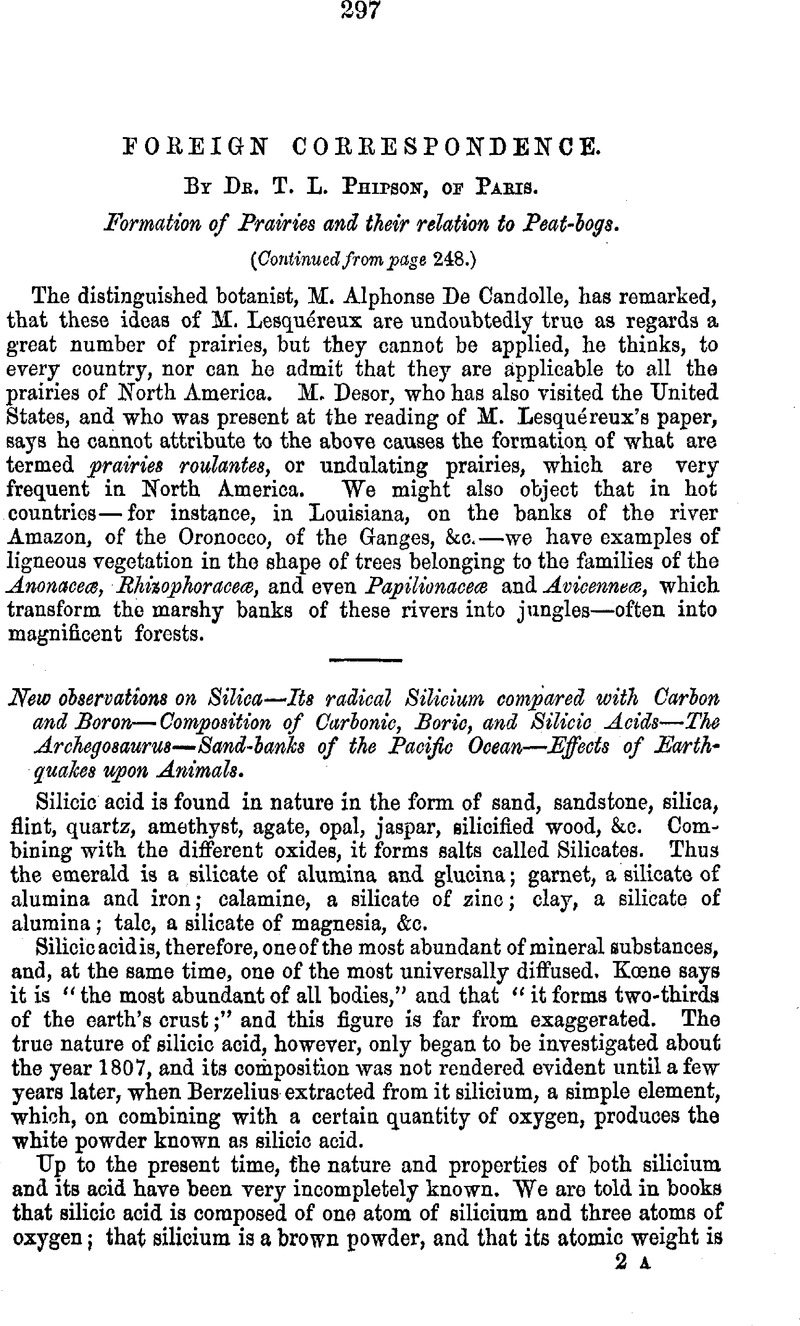No CrossRef data available.
Article contents
Foreign Correspondence
Published online by Cambridge University Press: 17 March 2016
Abstract

- Type
- Letter
- Information
- Copyright
- Copyright © Cambridge University Press 1858
References
page 298 note * The proportion in which one body combines with others is called in chemistry its “atomic weight” or “equivalent.”—T. L. P.
page 298 note † This new oxide of silicium is a white powder obtained from chloride of silicium; when it comes in contact with water, hydrogen gas is evolved, and silicic acid formed.—T. L. P.
page 299 note * Until now the diamond has been considered the hardest substance in nature.—T. L. P.
page 299 note † “Taking the same crystalline form.”—T. L. P.
page 299 note ‡ Marignac's Paper, which is extremely interesting, has been published in the Comptes Rendus of the Paris Academy of Sciences for the 3rd of May, 1858. Its purely chemical nature prevents our laying the details of it before our readers.—T. L. P.
page 299 note § For some late observations on the Archegesaurus by Professor Owen, and an examination of some of M. von Meyer's views of its structure, see Annals Nat. Hist., 3rd Ser., vol. I., p. 320.—Ed. Geol.




